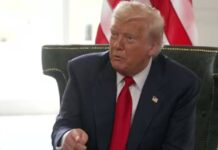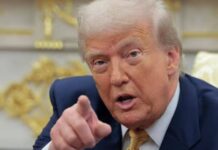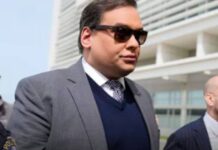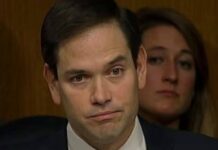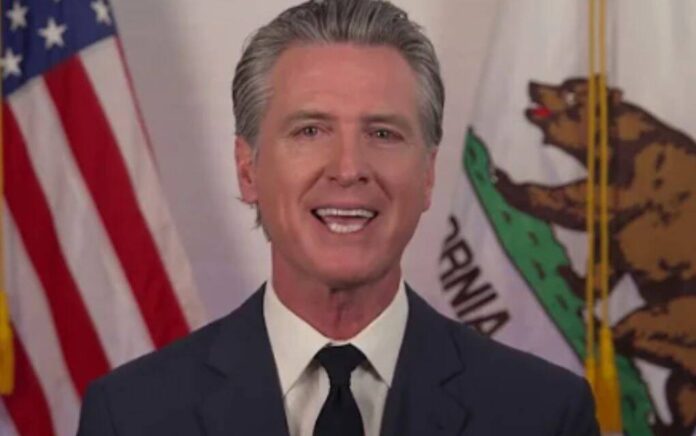
The Democrats are looking towards 2028 to win back the White House. Their options are few.
And now the Governor of California Gavin Newsom’s taken a massive step towards becoming President.
Gavin Newsom’s South Carolina Visit and 2028 Presidential Prospects
California Governor Gavin Newsom, a prominent figure in the Democratic Party, is set to visit South Carolina next week to engage with communities on the challenges posed by natural disasters. The South Carolina Democratic Party (SCDP) announced that Newsom will meet with residents on July 8 and 9, 2025, as the state braces for the upcoming hurricane season, while California continues to grapple with recurring wildfires.
During his two-day tour, Newsom aims to connect with locals, discuss solutions for pressing issues like employment, healthcare, and rural infrastructure, and highlight South Carolinians who are making a difference in their communities, according to a press release cited by Politico. This marks Newsom’s second recent trip to the state, following a January 2024 visit to campaign for President Joe Biden and Vice President Kamala Harris.
The timing of Newsom’s visit aligns with the Democratic Party’s efforts to regroup after a significant electoral setback in 2024, losing both the presidency and Senate control. As the party looks ahead to the 2026 midterms and the 2028 presidential election, Newsom is among a small group of names frequently mentioned as potential candidates, alongside Harris, Pete Buttigieg, and others like Rahm Emanuel, Andy Beshear, Josh Shapiro, and Gretchen Whitmer. No Democrat has yet formally announced a 2028 presidential bid.
As the Democratic Party navigates a period of uncertainty following its 2024 losses, California Governor Gavin Newsom is emerging as a leading contender for the 2028 presidential nomination. Recent polling from Emerson College, conducted in June 2025, places Newsom among the top Democratic hopefuls with 12% support, trailing Pete Buttigieg (16%) and Kamala Harris (13%), but ahead of figures like Josh Shapiro and Alexandria Ocasio-Cortez, both at 7%. The poll also reveals significant indecision, with 23% of Democratic voters undecided, reflecting the party’s lack of a unifying figure.
Newsom’s current tour of South Carolina, a key early primary state, is widely seen as a strategic move to bolster his national profile. The SCDP has framed the visit as an opportunity for Newsom to address natural disaster recovery, drawing parallels between South Carolina’s hurricane challenges and California’s wildfire crises. However, this focus on shared crises also serves as a platform for Newsom to showcase his leadership experience, particularly in managing high-profile issues like disaster response, jobs, and healthcare, which resonate with Democratic voters.
Yet, the Democratic Party’s reliance on figures like Newsom highlights a deeper issue: its struggle to cultivate fresh leadership. After the 2024 election, the party faced public infighting and failed to rally behind a clear successor to Biden or Harris, leaving a vacuum that Newsom and others are attempting to fill. Critics argue that the Democrats’ inability to move beyond familiar names like Newsom, Harris, or Buttigieg signals a lack of bold vision, as the party clings to establishment figures rather than embracing new voices.
Newsom’s appeal stems partly from his high-profile clashes with President Donald Trump, particularly over immigration policy, which have boosted his visibility. A Morning Consult poll from June 2025 showed his support among Democrats rising from 5% in March to 11%, a jump attributed to his handling of protests in Los Angeles. However, his association with California’s progressive policies, often criticized as out of touch with moderate voters, could limit his appeal in swing states.
South Carolina’s role as an early primary state makes it a critical testing ground for Newsom’s candidacy. The state’s Democratic voters, particularly its significant Black population, played a pivotal role in Biden’s 2020 victory, and Newsom’s outreach in rural and GOP-leaning areas suggests an attempt to broaden his base. Still, some question whether his California-centric brand will resonate in more conservative regions, where voters may prioritize economic pragmatism over progressive ideals.
Other potential candidates, such as Pete Buttigieg, Kamala Harris, and Josh Shapiro, are also positioning themselves for 2028. Buttigieg, who led the Emerson poll, benefits from his articulate media presence and moderate appeal, though his tenure as Transportation Secretary drew mixed reviews. Harris, despite her 2024 loss, retains a loyal base but faces skepticism about her electability. Shapiro, with strong approval in Pennsylvania, is a rising star, but his relatively low 7% polling suggests he’s less known nationally.
Meanwhile, figures like Andy Beshear, Gretchen Whitmer, and Rahm Emanuel are mentioned as contenders, but none have matched Newsom’s proactive campaign-like efforts. Beshear’s appeal in red-leaning Kentucky and Whitmer’s Midwest pragmatism make them viable, but their lower name recognition puts them at a disadvantage. Emanuel, a former White House official, remains a long shot despite his political experience. The absence of declared candidates shows how nervous Democrats are right now, with many waiting until after the 2026 midterms to commit.
The Democratic Party’s challenges extend beyond candidate selection. The 2026 Congressional midterms loom as a daunting hurdle, with polling indicating a tight race—43% for Democrats versus 40% for Republicans, with 18% undecided. The party’s losses in 2024 exposed vulnerabilities in messaging and voter outreach, particularly in rural areas where Newsom is now focusing his efforts. Critics argue that the Democrats’ failure to articulate a cohesive economic message has left them disconnected from working-class voters.
Newsom’s South Carolina visit also highlights his attempt to address this disconnect. By engaging with communities hit by job losses and natural disasters, he aims to present himself as a problem-solver capable of bridging urban and rural divides. However, his record in California—marked by criticism over homelessness and business departures—casts a shadow over his national ambitions. Posts on X have been particularly scathing, with some users calling Newsom’s governance a liability for his presidential hopes.
The Democrats’ strategy for 2028 remains murky. The lack of a clear frontrunner and the party’s tendency to recycle familiar names suggest a failure to adapt to a changing electorate. Newsom’s proactive moves, like his podcast to engage conservative voters, indicate an awareness of this challenge, but their effectiveness is uncertain.
Moreover, the Democrats face a structural disadvantage in 2028. A generic presidential ballot test from Emerson shows a dead heat—42% for Democrats and 42% for Republicans, with 16% undecided—indicating a polarized electorate. The party’s inability to capitalize on issues like healthcare and infrastructure, where Newsom claims expertise, is likely to continue to be an issue in the years to come.
Newsom’s trip to South Carolina, while framed as a policy-focused visit, is undeniably a campaign audition. His advisors insist the focus is on supporting Democrats in 2026, but the choice of a key primary state and the emphasis on voter engagement tell a different story. Political analysts note that Newsom’s increased national presence, including his podcast and public disputes with Trump, is designed to keep him in the spotlight. Still, his ability to translate California’s progressive policies into a national platform remains a gamble.
The Democratic Party’s path to 2028 will require more than high-profile candidates like Newsom. The party’s struggles to unify after 2024 and its failure to counter Republican momentum suggest a need for introspection. Newsom’s focus on rural voters and disaster recovery is a step toward addressing these weaknesses, but it’s unclear whether he can overcome perceptions of elitism tied to his California roots.




